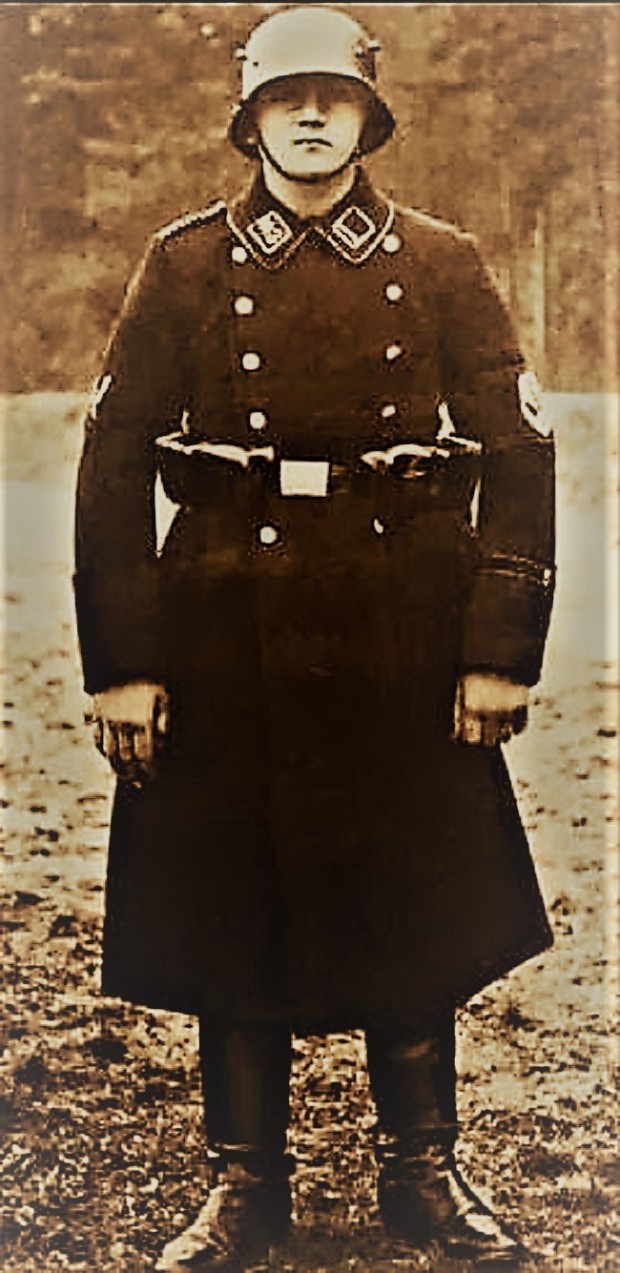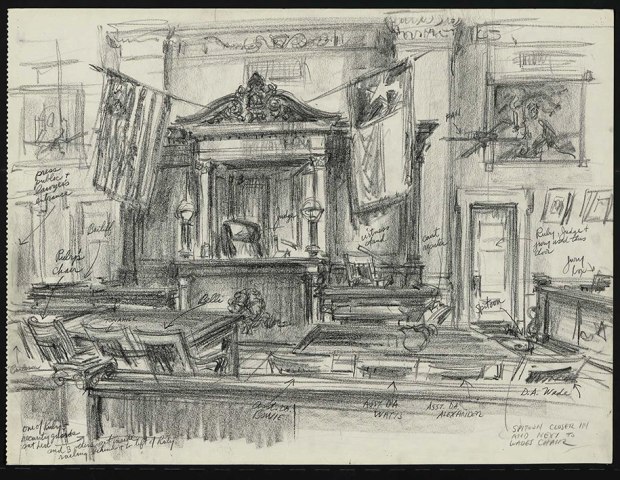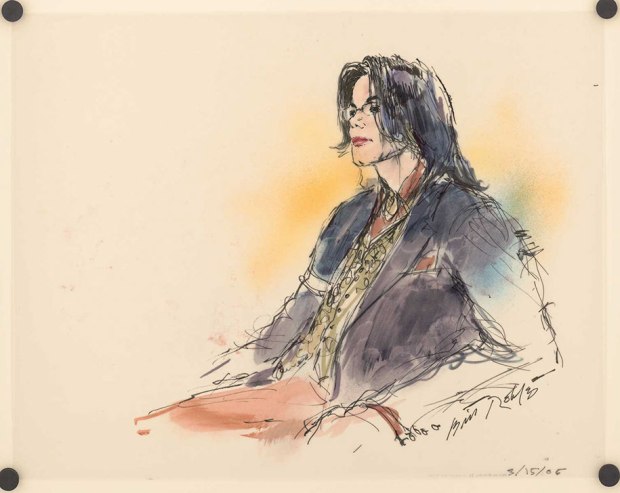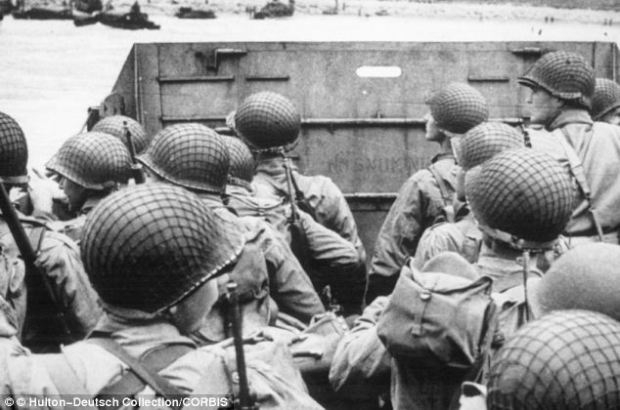
The picture above is of John Lennon and Mark Chapman.Lennon (signing a copy of Double Fantasy for Chapman several hours before Chapman murdered him.On 8 December 1980, Lennon was shot by Mark David Chapman in the archway of the Dakota, his residence in New York City.
Lennon had just returned from Record Plant Studio with his wife, Yoko Ono.

Although John Lennon was the most famous musician to be murdered, he was not the only one. There were dozens other musicians whose lives were brutally ended, below are just a few of them.
Peter Tosh

On 11 September 1987, just after Tosh had returned to his home in Jamaica, a three-man gang came to his house on motorcycles and demanded money. Tosh replied that he did not have any with him but the gang did not believe him. They stayed at his residence for several hours and tortured him in an attempt to extort money from Tosh. During this time, Tosh’s associates came to his house to greet him because of his return to Jamaica. As people arrived, the gunmen became more and more frustrated, especially the chief thug, Dennis “Leppo” Lobban, a man whom Tosh had previously befriended and tried to help find work after a long jail sentence.

Tosh said he did not have any money in the house, after which Lobban put a gun to Tosh’s head and shot once, killing him. The other gunmen began shooting, wounding several other people and also killing herbalist Wilton “Doc” Brown and disc jockey Jeff “Free I” Dixon who had worked for the Jamaica Broadcasting Corporation (JBC).Tosh’s “long time companion” Andrea Marlene Brown, his drummer Carlton “Santa” Davis, musician Michael Robinson and Jeff “Free I” Dixon’s wife, Yvonne were wounded during the robbery.
According to Police Commissioner Herman Ricketts, Dennis “Leppo” Lobban surrendered and two other men were interrogated but not publicly named Lobban went on to plead innocent during his trial, telling the court he had been drinking with friends. The trial was held in a closed court due to the involvement of illegal firearms. Lobban was ultimately found guilty by a jury of eight women and four men and sentenced to death by hanging.His sentence was commuted in 1995 and Lobban remains in jail. Another suspect was acquitted due to insufficient evidence.The other two gunmen were never identified by name.
Mia Zapata

Mia Katherine Zapata (August 25, 1965 – July 7, 1993) was the lead singer for the Seattle punk band The Gits.After gaining praise in the nascent grunge rock scene, Zapata was murdered in 1993 during the recording of The Gits second album. The crime went unsolved for a decade before her killer, Jesus Mezquia, was tried, convicted and sentenced to 37 years in prison.
At around 2:00 a.m. on July 7, 1993, Zapata left the Comet Tavern in the Capitol Hill area of Seattle. She stayed at a studio space in the basement of an apartment building located a block away, and briefly visited a friend who lived on the second floor. This was the last time she was seen alive. She may have walked a few blocks west, north to a friend’s apartment, or may have decided to take the long walk south to her home.
She was beaten, strangled, and raped in the Central District of Seattle. It is believed she encountered her attacker shortly after 2:15 a.m. Her body was not initially identified, as she had no identification on her when she was found.
According to the cable television show Forensic files, a man two blocks from the Comet Tavern heard a scream around 3:00 a.m. A woman discovered her body in the street at around 3:30 a.m., near the intersection of 24th Avenue South and South Washington Street in the Central District. According to the medical examiner, if she had not been strangled she would have died from the internal injuries suffered from the beating. An autopsy found evidence of a struggle in which Zapata suffered blunt impact to her abdomen and a lacerated liver, according to court documents.
Zapata is interred at Cave Hill Cemetery in her hometown of Louisville. The Seattle music community, including its most famous bands – Nirvana, Pearl Jam, Soundgarden – helped raise $70,000 to hire a private investigator for three years.
The funds dried up without any major breaks in the case, but the investigator, Leigh Hearon, continued to investigate on her own time. In 1998, after five years of investigation, Seattle police Detective Dale Tallman said: “We’re no closer to solving the case than we were right after the murder”
In 2003, Florida fisherman Jesus Mezquia, who had come from Cuba in 1980 in the Mariel boatlift,was arrested in connection with Zapata’s murder. DNA evidence was used to tie him to the murder and charges were brought against him.
Dimebag Darrell

Darrell Lance Abbott (August 20, 1966 – December 8, 2004), also known as Diamond Darrell and Dimebag Darrell, was an American guitarist and songwriter best known as a founding member of two bands, Pantera and Damageplan, alongside his brother, Vinnie Paul. He was considered to be one of the driving forces behind groove metal.
Abbott was shot and killed by a gunman while on stage during a performance with Damageplan on December 8, 2004, at the Alrosa Villa in Columbus, Ohio.
On December 8, 2004, Abbott was murdered onstage while performing with Damageplan at the Alrosa Villa in Columbus, Ohio. Moments into the band’s set, 25-year-old former Marine Nathan Gale, using a 9 mm Beretta 92FS pistol, shot Abbott three times in the head, killing him instantly. Ironically this murder was 24 years to the date of John Lennon’s murder.
Marvin Gaye

At around 12:38 p.m. on April 1, 1984, while Gaye was in his bedroom, his father Marvin Gay Sr. shot Gaye in the heart and then in his left shoulder, the latter shot taken at point-blank range.
Minutes earlier, the two men had been involved in a physical altercation after Gaye intervened in an argument between his parents. The first shot proved to be fatal. Gaye was pronounced dead at 1:01 p.m. after his body arrived at California Hospital Medical Center.
After Gaye’s funeral, his body was cremated at Forest Lawn Memorial Park at the Hollywood Hills; his ashes were later scattered into the Pacific Ocean. Initially charged with first-degree murder, Gay Sr.’s charges dropped to voluntary manslaughter following a diagnosis of a brain tumor Marvin Gay Sr. was later sentenced to a suspended six-year sentence and probation. He died at a nursing home in 1998.
Tupac Shakur

On the night of September 7, 1996, Shakur attended the Bruce Seldon vs. Mike Tyson boxing match with Suge Knight at the MGM Grand in Las Vegas, Nevada.

After leaving the match, one of Knight’s associates spotted Orlando “Baby Lane” Anderson, an alleged Crips gang member from Compton, California, in the MGM Grand lobby. Earlier that year, Anderson and a group of Crips had robbed a member of Death Row’s entourage in a Foot Locker store. Knight’s associate told Shakur, who attacked Anderson. Shakur’s entourage, as well as Knight and his followers, assisted in assaulting Anderson. The fight was captured on the hotel’s video surveillance. After the brawl, Shakur went with Knight to Death Row-owned Club 662 (now known as restaurant/club Seven). Shakur rode in Knight’s 1996 black BMW 750iL sedan as part of a larger convoy, which included many in Shakur’s entourage.
At 11:00–11:05 p.m., they were halted on Las Vegas Boulevard by Metro bicycle police for playing the car stereo too loudly and not having license plates, which were found in the trunk of Knight’s car; the party was released a few minutes later without being ticketed.At 11:10 p.m., while they were stopped at a red light at the intersection of Flamingo Road and Koval Lane in front of the Maxim Hotel, a vehicle occupied by two women pulled up on their left side. Shakur, who was standing up through the sunroof, exchanged words with the women and invited them to Club 662. At 11:15 p.m., a white, four-door, late-model Cadillac with an unknown number of occupants pulled up to the sedan’s right side, rolled down a window, and rapidly fired gunshots at Shakur. He was hit four times, twice in the chest, once in the arm, and once in the thigh.One of the bullets went into Shakur’s right lung.Knight was hit in the head by fragmentation. The bodyguard, Frank Alexander, stated that, when he was about to ride along with the rapper in Knight’s car, Shakur asked him to drive the car of Shakur’s fiancée, Kidada Jones, instead, in case they needed additional vehicles for the drive from Club 662 to the hotel.

After arriving at the scene, police and paramedics took Knight and a wounded Shakur to the University Medical Center of Southern Nevada. Chris Carroll, the first Las Vegas police officer to arrive on the scene, heard Shakur’s last words, “fuck you”. Carroll reports that he refused to say another word to him or another officer.According to an interview with the music video director Gobi, while at the hospital, Shakur received news from a Death Row marketing employee that the shooters had called the record company and threatened Shakur.Gobi informed the Las Vegas police but said that the police claimed to be understaffed. No attackers came. At the hospital, Shakur was heavily sedated, was placed on life-support machines, and was ultimately put under a barbiturate-induced coma after repeatedly trying to get out of the bed.While in the intensive-care unit, on the afternoon of Friday, September 13, 1996, Shakur died from internal bleeding; doctors attempted to revive him but could not stop the hemorrhaging.His mother, Afeni, made the decision to tell the doctors to stop.He was pronounced dead at 4:03 p.m. The official causes of death were noted as respiratory failure and cardiopulmonary arrest in connection with multiple gunshot wounds.
Shakur’s body was cremated the next day. Some of his ashes were later mixed with marijuana and smoked by members of the Outlawz.

George Harrison

One of John Lennon’s fellow Beatles nearly got killed on Dec. 30, 1999.At approximately 3:30AM, Michael Abram,
 a 33-year old native of Liverpool, avoided security by scaling the fence of Harrison’s Friar Park estate near Henley-on-Thames, Oxfordshire and entered the mansion by throwing a statue through a window, which woke up the sleeping Harrisons.
a 33-year old native of Liverpool, avoided security by scaling the fence of Harrison’s Friar Park estate near Henley-on-Thames, Oxfordshire and entered the mansion by throwing a statue through a window, which woke up the sleeping Harrisons.
George confronted Abram, who was screaming at the spiritual Beatle with a knife in his hand. The 56-year old Harrison ran at Abram to try to tackle and disarm him. The attempt was unsuccessful, and George was stabbed repeatedly in the chest.
Meanwhile, Harrison’s wife, Olivia, whose mother was staying with the Harrisons at the time, struck Abram with a lamp, causing him to drop the knife. Abram then went after Olivia by trying to strangle her with the lamp’s cord, but she was able to escape.

Police arrived after 15 minutes and arrested Abram. Paramedics stopped Harrison’s bleeding and took him to a nearby hospital, where he was treated for a punctured lung. According to the hospital’s medical director, some of the wounds were very close to major arteries, which would have been fatal if they had been hit.
The investigation determined that this was not a simple burglary gone wrong, but a planned attack on Harrison. The prosecutor said that Abram “believed that The Beatles were witches who flew around on broomsticks. Subsequently, George Harrison possessed him and that he had been sent on a mission by God to kill him. He saw George as a sorcerer and a devil.
George Harrison survived the attack but died in 2001, aged 58, from lung cancer.
I am passionate about my site and I know you all like reading my blogs. I have been doing this at no cost and will continue to do so. All I ask is for a voluntary donation of $2, however if you are not in a position to do so I can fully understand, maybe next time then. Thank you.
To donate click on the credit/debit card icon of the card you will use. If you want to donate more then $2 just add a higher number in the box left from the PayPal link. Many thanks.



 When this special form of torture was conducted on prisoners in the woods around the camp, the screams of the victims were so intense that the other inmates soon gave the area a name, the “singing forest.”
When this special form of torture was conducted on prisoners in the woods around the camp, the screams of the victims were so intense that the other inmates soon gave the area a name, the “singing forest.”
 He received a pension of 280 marks a month and over 10,500 marks in back payments.
He received a pension of 280 marks a month and over 10,500 marks in back payments.























































 Actor David Bacon, best known for playing Bob Barton in the Masked Marvel serials of the 1930s, died shortly after crashing his car in Santa Monica, California on 12 September 1943. Afterwards he was found to have been suffering from a stab wound to the chest; no suspect has ever been identified.
Actor David Bacon, best known for playing Bob Barton in the Masked Marvel serials of the 1930s, died shortly after crashing his car in Santa Monica, California on 12 September 1943. Afterwards he was found to have been suffering from a stab wound to the chest; no suspect has ever been identified.
























 a 33-year old native of Liverpool, avoided security by scaling the fence of Harrison’s Friar Park estate near Henley-on-Thames, Oxfordshire and entered the mansion by throwing a statue through a window, which woke up the sleeping Harrisons.
a 33-year old native of Liverpool, avoided security by scaling the fence of Harrison’s Friar Park estate near Henley-on-Thames, Oxfordshire and entered the mansion by throwing a statue through a window, which woke up the sleeping Harrisons.
















You must be logged in to post a comment.